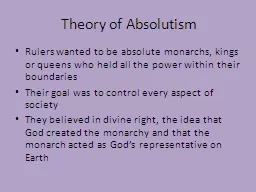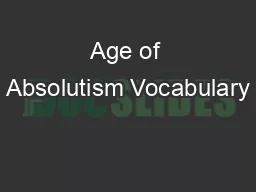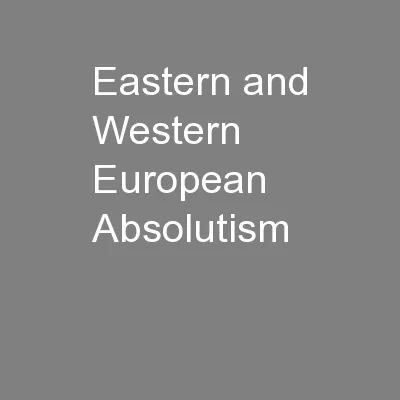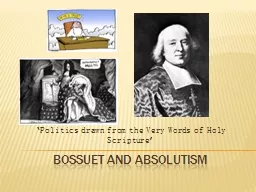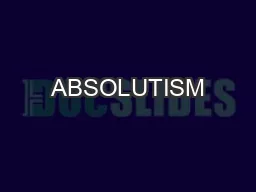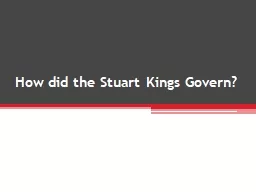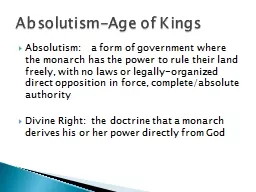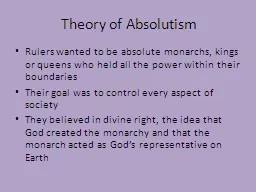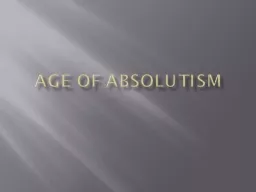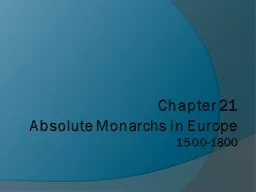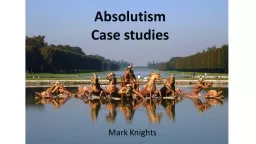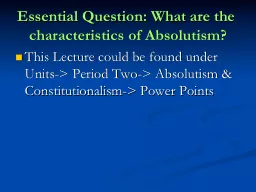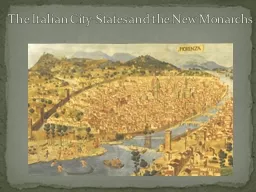PPT-Theory of Absolutism Rulers wanted to be absolute monarchs, kings or queens who held all
Author : karlyn-bohler | Published Date : 2018-02-25
Their goal was to control every aspect of society They believed in divine right the idea that God created the monarchy and that the monarch acted as Gods representative
Presentation Embed Code
Download Presentation
Download Presentation The PPT/PDF document "Theory of Absolutism Rulers wanted to be..." is the property of its rightful owner. Permission is granted to download and print the materials on this website for personal, non-commercial use only, and to display it on your personal computer provided you do not modify the materials and that you retain all copyright notices contained in the materials. By downloading content from our website, you accept the terms of this agreement.
Theory of Absolutism Rulers wanted to be absolute monarchs, kings or queens who held all: Transcript
Download Rules Of Document
"Theory of Absolutism Rulers wanted to be absolute monarchs, kings or queens who held all"The content belongs to its owner. You may download and print it for personal use, without modification, and keep all copyright notices. By downloading, you agree to these terms.
Related Documents

